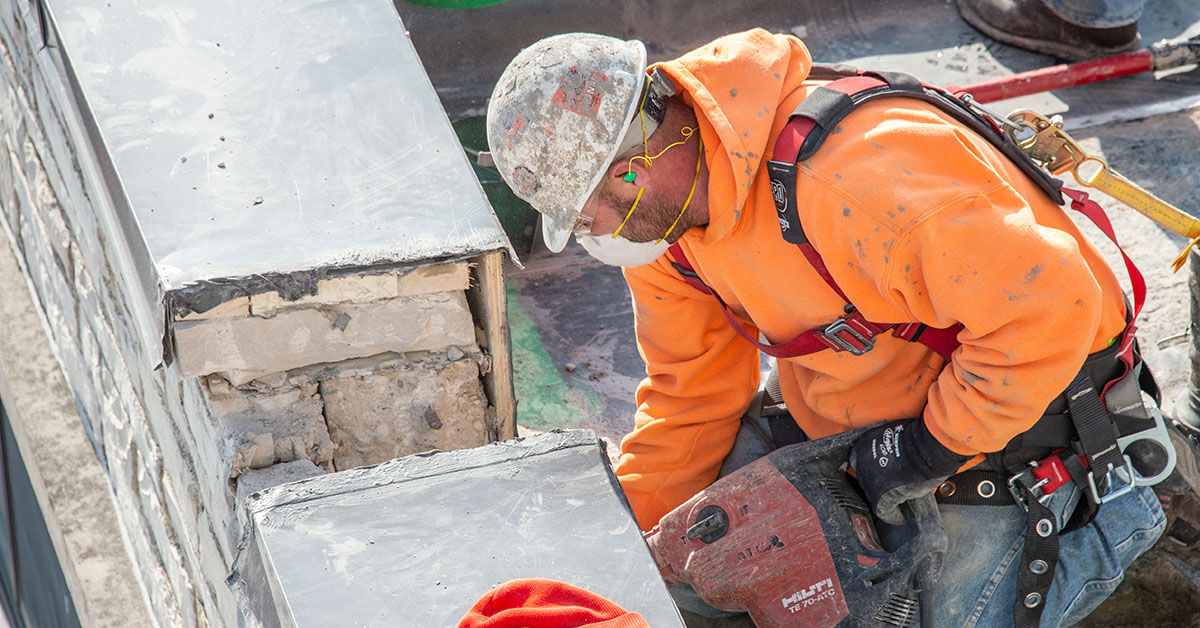Using designated areas as fall protection on flat roofs
Date Posted: 06/08/2020

Employees may need to access a roof to service an air conditioning unit or perform other brief tasks. This raises the question of how close an employee can be to the edge of the roof before fall protection is needed. The answer, according to OSHA’s general industry standard at 1910.28(b)(13), is 15 feet, assuming the work is both temporary and infrequent. Otherwise, some type of fall protection is needed.
A designated area is a type of fall protection, but it’s a nonconventional option. Conventional fall protection includes positioning systems or personal fall arrest systems, which require an anchor point rated at 5,000 pounds. An anchor point may not be available on a roof, and installing one might not be feasible.
A designated area may be used on low-slope roofs (also called flat roofs) in two situations.
- First, if the work will be at least 6 feet from the edge (but less than 15 feet), a designated area may be used if the work is both temporary and infrequent.
- Second, if the work will be 15 feet or more from the edge, a designated area may be used. In fact, if employees will be at least 15 feet from the edge and the work is both temporary and infrequent, no fall protection is required (not even a designated area).
For work within 6 feet of the edge, a designated area cannot be used. Employees must use conventional fall protection like a personal fall arrest system, positioning systems, or guardrails.
Temporary and infrequent
A key phrase is “temporary and infrequent,” which is not defined in the OSHA regulation. However, the 2016 preamble to the revised Walking Working Surfaces regulations explained that “temporary” means the task will require no more than an hour or two, and “infrequent” means the need arises only on occasion, such as monthly. In addition, the task should require only one trip to the roof. OSHA gave an example of replacing an AC filter on a roof unit once per month.
To summarize, a designated area can be used if:
- The work is at least 15 feet from the edge, no matter how long the job will take; or
- The work is at least 6 feet from the edge and is both temporary and infrequent.
A designated area is not an option (and conventional fall protection is required) if:
- The work is within 6 feet of the edge, or
- The work is within 15 feet of the edge but does not qualify as temporary and infrequent.
The designated area provision was intended to be compatible with warning line systems for construction under 1926.502(f). However, the construction rule does not have the restriction for “temporary and infrequent” tasks, so warning lines could be used in construction work without regard for the duration of the task.
How Safety Management Suite Can Help
The regulations don’t always provide the information you need. For designated areas, key phrases were not defined in the regulations, but did appear in the preamble. If you can’t find the answers you need, send us a question using the Expert Help tool in the J. J. Keller® SAFETY MANAGEMENT SUITE. Our experts will do the research for you and reply within one business day.
E-mail Newsletter
Sign up to receive the weekly EHS Insider email newsletter for safety articles, news headlines, regulatory alerts, industry events, webcasts, and more.